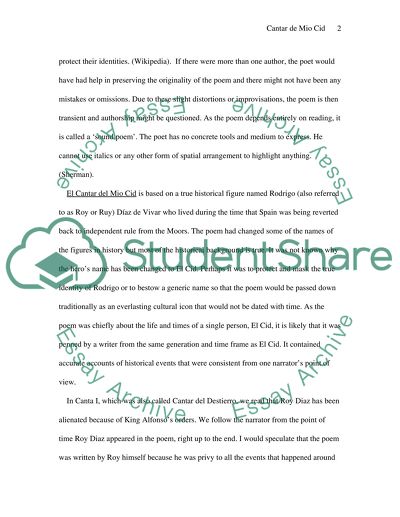Cite this document
(“El Cantar del Mio Cid Essay Example | Topics and Well Written Essays - 2000 words”, n.d.)
Retrieved from https://studentshare.org/literature/1516412-el-cantar-del-mio-cid
Retrieved from https://studentshare.org/literature/1516412-el-cantar-del-mio-cid
(El Cantar Del Mio Cid Essay Example | Topics and Well Written Essays - 2000 Words)
https://studentshare.org/literature/1516412-el-cantar-del-mio-cid.
https://studentshare.org/literature/1516412-el-cantar-del-mio-cid.
“El Cantar Del Mio Cid Essay Example | Topics and Well Written Essays - 2000 Words”, n.d. https://studentshare.org/literature/1516412-el-cantar-del-mio-cid.


